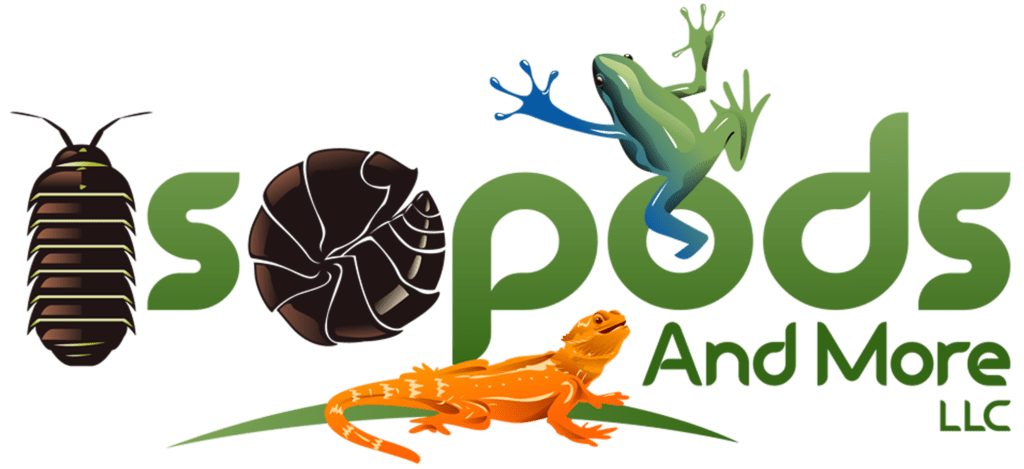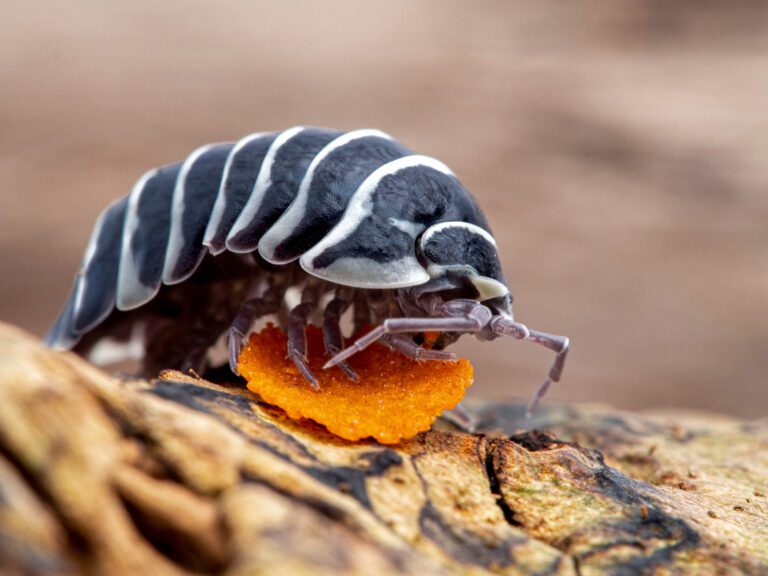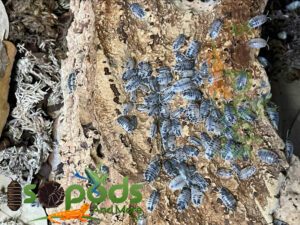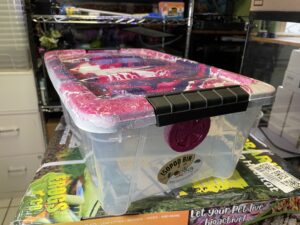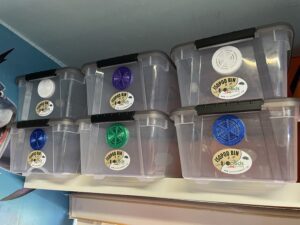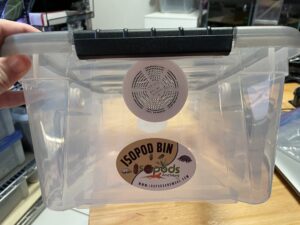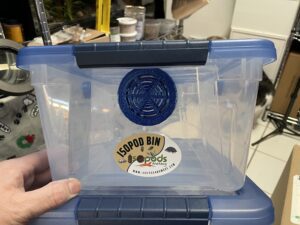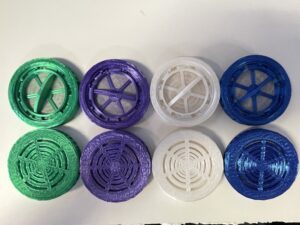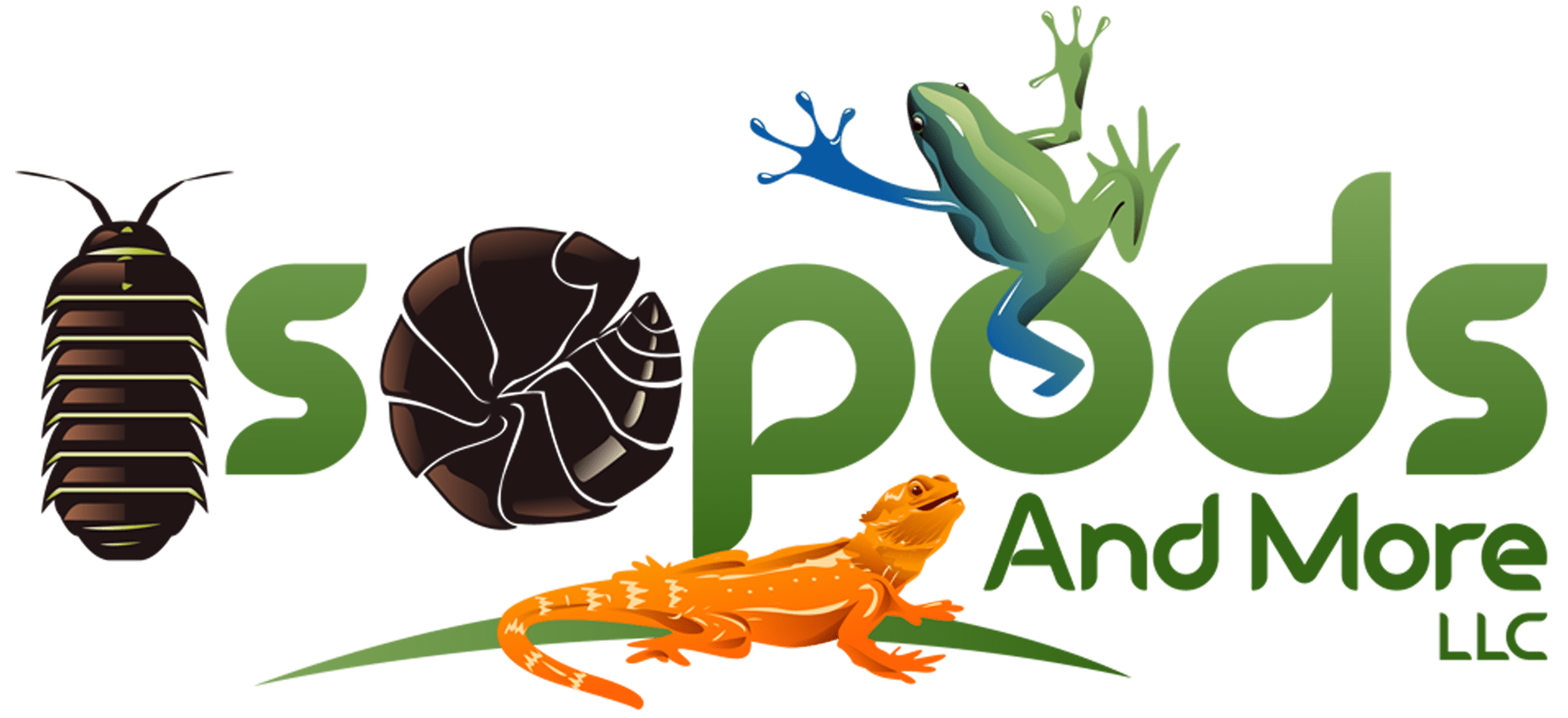Are you fascinated by the delightful world of isopods and are ready to take on the challenge of caring for Zebra isopods? Look no further, for the Ultimate Guide to Zebra Isopod Care is here to provide you with all the information you need to ensure your isopods thrive and multiply. From the basics of isopod care and breeding to specific tips on caring for Zebra isopods, this comprehensive guide will equip you with the knowledge and guidance to become a successful isopod owner. With its friendly and informative tone, the Ultimate Guide to Zebra Isopod Care is your go-to resource for creating a happy and healthy environment for these fascinating creatures.
Isopod Care
Isopods, also known as pillbugs or woodlice, are fascinating little creatures that make great pets. Not only are they easy to care for, but they also play an important role in maintaining a healthy ecosystem within their enclosure. Whether you’re a seasoned isopod enthusiast or a beginner looking to embark on an exciting new hobby, this comprehensive guide will provide you with everything you need to know about isopod care.
Habitat Setup
Creating a suitable habitat for your isopods is crucial for their health and well-being. Here are some key factors to consider when setting up their enclosure.
Substrate
Choosing the right substrate is essential for providing a comfortable environment for your isopods. Opt for a mixture of organic materials such as coconut fiber, peat moss, and leaf litter. This will mimic their natural habitat and provide them with proper nourishment.
Enclosure Size
Isopods thrive in spacious enclosures that allow them to roam and explore. The size of the enclosure will depend on the number of isopods you plan to keep. As a general guideline, provide at least 1 square foot of space per 10-20 isopods.
Temperature and Humidity
Maintaining the correct temperature and humidity levels is crucial for the overall well-being of your isopods. Aim for a temperature range of 70-80°F (21-27°C) with a humidity level of 60-80%. This can be achieved by using a thermostat and a hygrometer to monitor and adjust the conditions as needed.
Lighting
While isopods don’t necessarily require specific lighting, providing a natural day-night cycle can help regulate their behavior and biological functions. A 12-hour light and dark cycle is generally suitable for most species.
Water and Humidity
Isopods require access to both water and humid conditions to thrive. Provide a shallow dish of dechlorinated water in their enclosure, ensuring it doesn’t get too deep to prevent accidental drownings. Additionally, mist the enclosure regularly to maintain the desired humidity levels.
Feeding
Isopods are primarily detritivores, which means they feed on decaying organic matter. Offer a variety of foods such as decaying leaves, fruits, vegetables, and calcium-rich supplements. Avoid using pesticides or chemicals on any food sources to ensure the safety of your isopods.
Cleaning
Maintaining a clean environment for your isopods is essential to prevent the buildup of waste and harmful bacteria. Spot clean the enclosure regularly by removing any uneaten food or waste. Perform a full cleaning of the enclosure every few months, replacing the substrate and cleaning all decorations thoroughly.
Now that you have mastered the basics of isopod care, let’s dive deeper into the world of breeding isopods.
Breeding Isopods
Breeding isopods can be an exciting and rewarding experience. Not only will you witness the life cycle of these fascinating creatures, but you’ll also be able to expand your isopod collection or share your knowledge with fellow enthusiasts. Here’s everything you need to know about breeding isopods.
Choosing Breeding Stock
Selecting the right breeding stock is crucial for successful breeding. Choose healthy and active adult isopods of the desired species, ensuring a good mix of males and females. Avoid inbreeding by introducing new bloodlines periodically.
Creating a Breeding Setup
When setting up a breeding setup, replicate the same habitat conditions as mentioned earlier. However, ensure that the enclosure is large enough to accommodate both the adult isopods and their offspring.
Temperature and Humidity
Maintaining the appropriate temperature and humidity levels becomes even more crucial during the breeding process. Isopods thrive in slightly higher humidity and temperature conditions than their normal habitat. Aim for a temperature range of 75-85°F (24-29°C) and a humidity level of 70-80%.
Feeding and Nutrition
Proper nutrition is vital for the successful breeding of isopods. Provide a varied diet, including high-quality leaf litter, decaying organic matter, and calcium-rich supplements. Make sure to offer an ample supply of food to support the breeding adults and their developing offspring.
Egg Laying and Incubation
Female isopods will typically lay their eggs in hidden, moist areas of the enclosure. Collect these eggs and transfer them to a separate container with moist substrate. Ensure the humidity levels are maintained, and wait patiently for the eggs to hatch.
Hatching and Rearing
Isopod eggs usually hatch within a few weeks, depending on the species and environmental conditions. Once the eggs hatch, provide them with the same care as adult isopods. Maintain optimal temperature, humidity, and a suitable diet to support their growth and development.
Separating and Growing Out
As the baby isopods grow, they will eventually need to be separated from the adults to avoid overcrowding. Transfer them to a larger enclosure with appropriate substrate, food, and hiding spots. Monitor their growth and ensure they have the ideal conditions for thriving.
Repeating the Breeding Cycle
Breeding isopods is an ongoing process. To maintain a healthy and diverse colony, repeat the breeding cycle periodically. Monitor the population size, introduce new bloodlines, and continuously strive to provide the best possible care for your isopods.
Now that you have a good understanding of breeding isopods, let’s explore the fascinating world of zebra isopods.
Choosing Zebra Isopods
Zebra isopods, also known as Armadillidium maculatum, are one of the most popular isopod species kept in captivity. These eye-catching creatures make a brilliant addition to any terrarium or bioactive setup. Here is everything you need to know about choosing zebra isopods.
Understanding Zebra Isopods
Zebra isopods are native to Europe and are prized for their striking black and white striped patterns. They are a relatively small isopod species, with adults measuring around half an inch in length. Zebra isopods have a gentle nature and are generally compatible with other small invertebrates.
Appearance and Variations
Zebra isopods get their name from the distinct black and white stripes that adorn their rounded bodies. The intensity and thickness of these stripes can vary among individuals, making each zebra isopod unique. The contrast between the black and white colors is truly captivating.
Behavior and Compatibility
Zebra isopods are sociable creatures that thrive when kept in groups. They are typically peaceful and can coexist with other small invertebrates, making them an excellent addition to a community enclosure. However, be cautious when introducing them to larger, more aggressive species.
Health and Quality
When choosing zebra isopods, it is important to select healthy and vibrant individuals. Look for active and agile isopods with no signs of deformities, injuries, or parasites. Avoid purchasing isopods from questionable sources to ensure the overall health and quality of your colony.
Where to Purchase
Zebra isopods can be found at various reputable online retailers, isopod breeders, and pet expos. Take the time to research and find a reliable source that provides healthy and well-cared-for zebra isopods. Always inquire about the source and breeding practices to ensure you are acquiring ethically sourced isopods.
Now that you have a good understanding of zebra isopods, let’s explore the essential considerations for creating a suitable habitat.
Habitat Setup
Creating a suitable habitat for your isopods is crucial for their overall well-being. By providing the right enclosure, substrate, hiding spots, and environmental conditions, you can ensure a thriving and sustainable isopod colony. Here are the key factors to consider when setting up their habitat.
Enclosure Selection
Choose an enclosure that provides ample space for your isopods to move around and exhibit their natural behavior. Glass or plastic terrariums with secure lids are commonly used for isopod enclosures. Ensure the enclosure has proper ventilation to prevent the buildup of excessive moisture.
Substrate Choice
Selecting the appropriate substrate is vital to mimic the isopods’ natural environment. A mixture of organic materials such as coconut fiber, peat moss, and leaf litter works well for most isopod species. This substrate will not only provide them with essential nutrients but also promote the breakdown of waste.
Hiding Spots and Decorations
Isopods love to explore and seek shelter in various hiding spots. Incorporate a variety of hideouts, such as cork bark, pieces of wood, or terracotta pots. These hiding spots not only provide them with a sense of security but also offer opportunities for breeding and molting.
Temperature and Humidity Control
Maintaining the appropriate temperature and humidity levels is crucial for the well-being of your isopods. Research the specific requirements of your chosen species and invest in a reliable thermostat and hygrometer to monitor and regulate the conditions accordingly.
Lighting Considerations
While isopods don’t require specific lighting, it is still essential to provide them with a natural day-night cycle. Ambient room lighting or indirect natural light is often sufficient for most species. However, if you’re growing live plants in the enclosure, consider using a full-spectrum LED light to support their growth.
Now that you have a well-prepared habitat, let’s explore the different types of substrates ideal for isopod care.
Substrate
Substrate choice plays a critical role in creating a suitable environment for your isopods. The right substrate not only provides essential nutrients but also assists in maintaining proper moisture levels and promotes the breakdown of waste. Let’s discuss the different types of substrates and their preparation.
Types of Substrate
There are various types of substrates suitable for isopod enclosures. Coconut fiber, peat moss, and leaf litter are commonly used due to their organic composition and moisture-retaining properties. Each type of substrate offers slightly different benefits, so it’s often recommended to create a mixture for optimal results.
Preparation and Sterilization
Before introducing the substrate into your isopod enclosure, it’s important to prepare and sterilize it properly. This helps eliminate any harmful bacteria or parasites that may be present. Sterilize the substrate by either baking it in the oven at a low temperature or microwaving it for a short period.
Depth and Moisture Level
Isopods require a suitable depth of substrate to burrow and molt effectively. Aim for a substrate depth of at least 2-4 inches, allowing ample space for the isopods to dig and establish their territories. Additionally, maintain a moisture level of approximately 60-80% to provide the necessary humidity for their well-being.
Adding Leaf Litter and Wood
Adding leaf litter and pieces of wood to the substrate provides enriching elements for your isopods. Leaf litter serves as a food source and habitat for small microorganisms, while wood creates additional hiding spots and stimulates natural behaviors. Ensure the leaf litter and wood are collected from pesticide-free environments.
Maintaining the Substrate
Regular maintenance of the substrate is essential to ensure the longevity and health of your isopods. Keep an eye on the moisture levels and adjust as needed. Remove any uneaten food, waste, or dead leaves to prevent the buildup of harmful bacteria and fungal growth. Periodically add fresh leaf litter and wood to replicate the natural cycle of decay.
Now that you have a well-versed understanding of substrate, let’s explore the importance of providing an appropriate enclosure size for your isopods.
Enclosure Size
Providing the appropriate enclosure size for your isopods is crucial for their overall well-being and quality of life. Isopods require space to thrive, exhibit natural behaviors, and establish territories within their colony. Let’s discuss the factors to consider when determining the ideal enclosure size.
Determining the Appropriate Size
The size of the enclosure will depend on the number of isopods you plan to keep. As a general guideline, provide at least 1 square foot of space per 10-20 isopods. This allows them to move around freely and engage in their natural behaviors without feeling cramped.
Considerations for Multiple Colonies
If you are housing multiple isopod colonies, ensure each colony has its own designated enclosure. This prevents territorial disputes and reduces the risk of breeding between different colonies. Separate enclosures also allow you to monitor the health and behavior of each colony individually.
Vertical Space Requirement
While isopods primarily inhabit the ground and burrow within the substrate, providing vertical space can be beneficial. Adding structures such as pieces of bark or cork bark allows isopods to climb and explore their environment. This vertical space also provides additional surface area for the growth of beneficial microorganisms.
Scaling Up as the Colony Grows
As your isopod colony grows, it’s important to provide them with larger enclosures to accommodate their increasing population. Regularly assess the space available and consider scaling up the enclosure as needed. Remember, a well-ventilated and spacious environment contributes to the overall health and vitality of your isopods.
Now that you have a good understanding of enclosure size, let’s explore the importance of temperature and humidity control for isopods.
Temperature and Humidity
Maintaining the proper temperature and humidity levels is crucial for the overall well-being and survival of your isopods. These environmental factors directly influence their metabolic rate, reproduction, and overall health. Let’s discuss the key considerations for temperature and humidity control.
Ideal Temperature Range
Most isopod species thrive within the temperature range of 70-80°F (21-27°C). It is important to maintain a stable temperature within this range, as extreme temperature fluctuations can be stressful for isopods. Use a thermostat to regulate the temperature and ensure the enclosure remains within the ideal range.
Providing Heat and Cooling
If the ambient temperature in your home or the room where the enclosure is placed falls below the recommended range, additional heating may be necessary. Heat mats, ceramic heat emitters, or heat cables can be utilized to provide a warm spot within the enclosure. Conversely, if the temperature rises above the desired range, consider using fans or air conditioning to cool the enclosure.
Maintaining Humidity Levels
To thrive, isopods require a humidity level of 60-80%. This can be achieved by misting the enclosure regularly with dechlorinated water or using a humidifier if necessary. Be mindful not to oversaturate the substrate, as excessive moisture can lead to mold or other harmful conditions.
Tools for Measuring Temperature and Humidity
To accurately monitor the temperature and humidity levels within the enclosure, invest in reliable measuring tools. Thermometers and hygrometers are essential for keeping track of these factors and ensuring they remain within the ideal range. Digital monitors or analog gauges are widely available and provide accurate readings.
Now that you understand the importance of temperature and humidity, let’s explore the impact of lighting on your isopods’ well-being.
Lighting
While isopods do not have specific lighting requirements, providing an appropriate light source can positively impact their behavior and biological functions. Let’s delve into the key considerations when it comes to lighting for your isopods.
Natural Light vs. Artificial Light
Isopods can thrive under ambient natural light, especially if their enclosure is placed near a window. However, if your isopod enclosure is located in a room with limited natural light, supplemental artificial lighting may be necessary. Full-spectrum LED lights are the preferred choice as they provide a balanced light spectrum similar to natural sunlight.
Lighting Schedule
Establishing a consistent lighting schedule is important for maintaining a natural day-night cycle for your isopods. Aim for a 12-hour light and 12-hour dark cycle to mimic their biological rhythms. Timers can be used to automate the lighting schedule, ensuring a consistent routine for your isopods.
UVB Requirements
Unlike reptiles, isopods do not require UVB lighting for vitamin D synthesis. However, if you have live plants in the enclosure, they may benefit from UVB lighting. Consult the specific lighting requirements of the plants you have to ensure they receive the appropriate spectrum and intensity of light.
Lighting Fixtures
When selecting lighting fixtures for your isopod enclosure, consider the size and design of the enclosure. LED strip lights, dome lamps, or clip lamps with heat-resistant bulbs are commonly used for smaller enclosures. For larger setups, consider investing in full-spectrum LED panels or fluorescent tube lights that cover a larger surface area.
Now that you understand the impact of lighting on isopods, let’s discuss the importance of water and humidity for their well-being.
Water and Humidity
Water and humidity are crucial elements for the well-being of your isopods. Adequate moisture levels contribute to their hydration, reproduction, and overall health. Let’s explore the key considerations when it comes to water and humidity for your isopods.
Water Sources and Placement
Providing a reliable source of water is essential for your isopods’ hydration. Place a shallow dish of dechlorinated water within your isopod enclosure, ensuring it is easily accessible but not deep enough to cause accidental drowning. You can use small dishes or lids as water sources, ensuring they are clean and replenished regularly.
Misting and Humidification
In addition to a water source, misting the enclosure regularly helps maintain the desired humidity levels. Use a spray bottle filled with dechlorinated water to mist the substrate, decor, and enclosure walls. Aim for fine droplets that mimic a light rain shower, allowing the excess moisture to be absorbed by the substrate.
Preventing Excess Moisture
While maintaining a suitable humidity level is important, it is equally crucial to prevent excessive moisture buildup in the enclosure. Excess moisture can lead to mold growth, bacterial infections, or respiratory problems for your isopods. Monitor the moisture levels using a hygrometer and make adjustments accordingly.
Monitoring Humidity Levels
Investing in a reliable hygrometer is essential for monitoring the humidity levels within your isopod enclosure. Digital hygrometers with remote sensors are commonly used and provide accurate readings. Regularly check the hygrometer readings and make adjustments to the misting frequency or ventilation if necessary.
Now that you understand the importance of water and humidity, let’s discuss the vital aspects of cleaning your isopod enclosure.
Cleaning
Maintaining a clean and sanitary environment is crucial for the health and well-being of your isopods. Regular cleaning procedures ensure the removal of waste, excess food, and potential pathogens that could harm your isopods. Let’s discuss the key aspects of cleaning your isopod enclosure.
Spot Cleaning
Spot cleaning involves removing any uneaten food, waste, or dead leaves from the enclosure. Use a small spoon or tongs to pick up these debris to prevent contamination and maintain a clean environment. Spot cleaning should be done every few days or as needed to prevent the buildup of harmful bacteria.
Full Cleaning
Performing a full cleaning of the enclosure is necessary every few months to maintain optimal conditions for your isopods. Start by removing the isopods and placing them in a temporary container with suitable substrate and hiding spots. Next, discard the old substrate, clean the enclosure with a pet-safe disinfectant, and allow it to dry completely.
Maintaining Hygiene
To prevent the spread of harmful pathogens, it’s important to maintain proper hygiene when handling your isopods and working with their enclosure. Wash your hands thoroughly before and after handling your isopods, and avoid introducing foreign contaminants into their environment.
Preventing Mold and Parasite Infestations
Regular cleaning and responsible husbandry practices greatly reduce the risk of mold growth and parasite infestations. Avoid overfeeding your isopods, as uneaten food can quickly deteriorate and create favorable conditions for mold. Additionally, regularly monitor your isopods for any signs of parasites and promptly address any issues to maintain a healthy colony.
By incorporating regular cleaning into your isopod care routine, you ensure a clean and healthy environment for your beloved isopods.
In conclusion, isopod care and breeding can be an enjoyable and rewarding experience for any hobbyist. By providing a suitable habitat, proper nutrition, and optimal environmental conditions, you can ensure the health and well-being of your isopods. Remember to thoroughly research the specific requirements of your chosen isopod species and consult reputable sources when it comes to purchasing and acquiring new isopods. With dedication and proper care, your isopod colony will thrive, delighting you with their fascinating behaviors and contributing to a balanced ecosystem within their enclosure.
